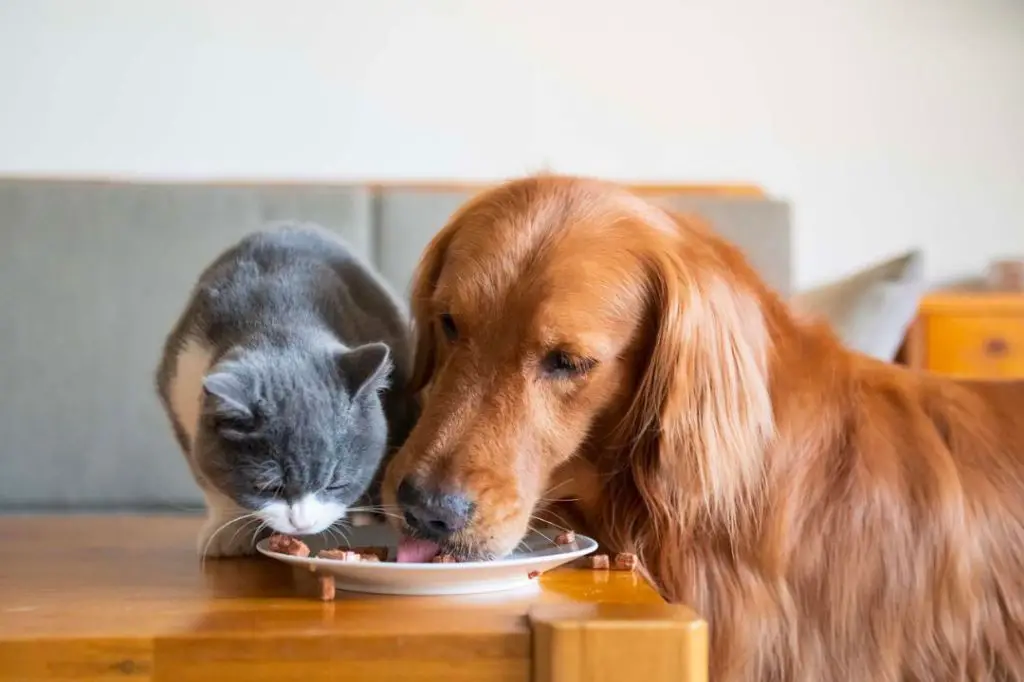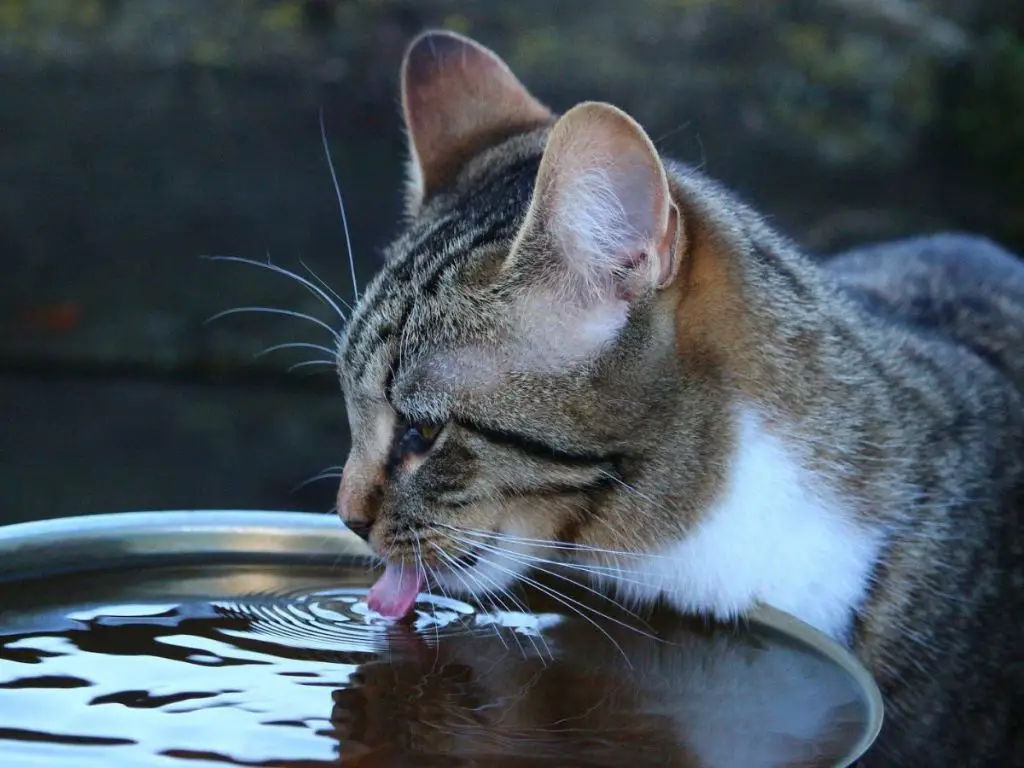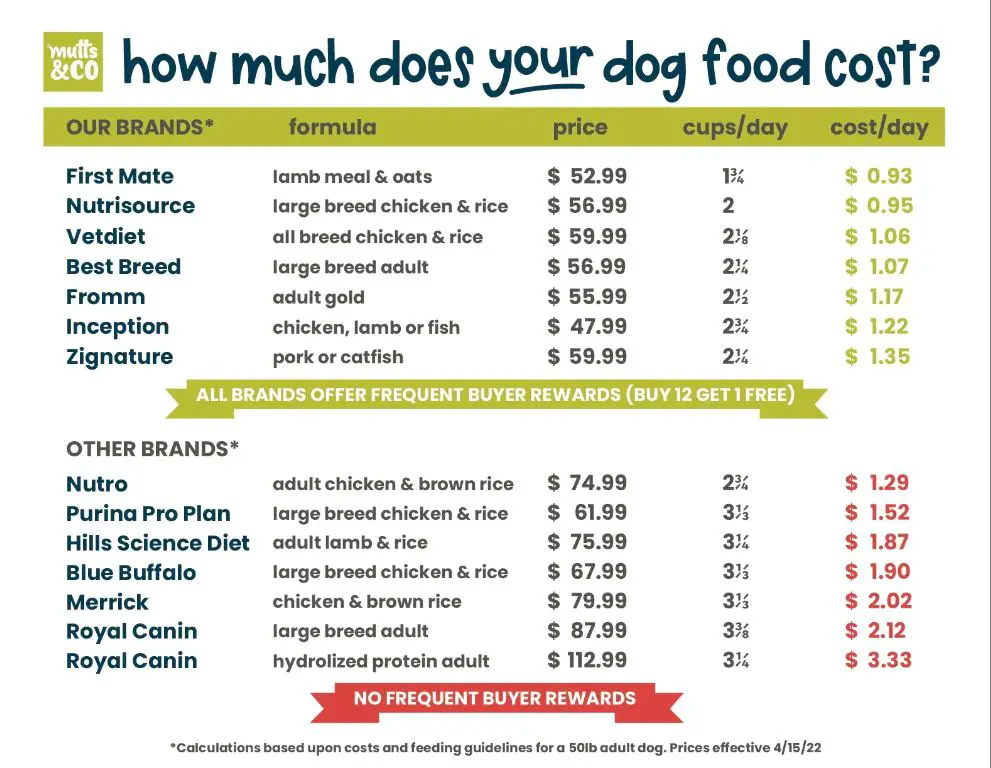Cat and dog foods may look similar, but there are some important differences in their nutritional makeup. While cats and dogs are both carnivores, cats evolved as obligate carnivores, meaning they need to eat meat and only meat to get all their required nutrients. Dogs are more omnivorous and can thrive on a wider variety of foods. This leads to some key differences in the ingredients, nutritional requirements, texture, flavors, moisture content, shelf life, portion sizes, and costs of cat versus dog food.
In this article, we will explore the key differences between cat food and dog food, looking at why they need to be formulated differently and how owners can choose the right food for their feline or canine companion.
Ingredients
Cats are obligate carnivores, meaning they need a diet high in meat-based proteins like chicken, beef, fish and eggs to thrive. Dogs are omnivores and while they benefit from meat protein, they also need a balance of carbohydrates, fats, vitamins and minerals. According to PetMD, cat food contains at least 26% protein compared to 18% protein in dog food.
Cat food tends to contain more animal-based protein like chicken, turkey, lamb, beef, eggs, fish and liver. Dog food may contain these as well, but also includes plant-based proteins like soy, corn and wheat. Meat meals like chicken meal and fish meal are also common in cat food for concentrated protein.

Both cat and dog foods contain animal fat for energy and essential fatty acids. However, cat food contains more of the animal-based fats cats need. Dog food may use plant oils like soybean, sunflower or flaxseed oil. Vitamins and minerals are added to both cat and dog food, but amounts vary based on their nutritional requirements. For example, cat food has more taurine, an amino acid cats cannot synthesize on their own.
Sources:
https://www.meowmix.com/cat-care/difference-between-dog-and-cat-food
https://avodermnatural.com/blog/what-is-the-difference-between-dog-and-cat-food/
Nutritional Requirements
Cats and dogs have different nutritional needs when it comes to protein, fats, vitamins and other nutrients. Cats are obligate carnivores, meaning they must eat meat in their diet. Dogs are omnivores and can thrive on both plant and animal products. Here are some of the key differences in their nutritional requirements:
Protein – Cats require much higher levels of protein than dogs, with recommendations often between 25-35% of their diet. Dogs only need around 18-27% protein. Cats cannot synthesize some essential amino acids like taurine, so they must obtain it from food. Dogs can synthesize their own taurine if the diet contains enough protein (Source).
Fats – Cats also need higher fat intake compared to dogs, with 15-20% fat recommended for cats and only around 5-15% for dogs. Fats provide essential fatty acids and are a concentrated source of energy (Source).
Vitamins – Both require vitamin A, but cats need more niacin, vitamin B1 and vitamin B6. Dogs need more vitamin B12 and vitamin D. Major nutritional deficiencies are more common in dogs (Source).
Overall, cat foods have higher minimums for protein, fats, vitamins and minerals compared to dog foods. Dog foods contain more carbohydrates. This reflects the different biological needs of cats versus dogs.
Texture
One of the main differences between cat food and dog food is the texture. Cat food is typically smooth, uniform, and finely ground. According to experts, cats prefer softer foods that are easier to chew and digest (Quora, 2022). On the other hand, dog food often contains visible ingredients and kibble or chunks of varying sizes and shapes. Dogs tend to prefer foods with more texture and crunch. Their teeth and jaws are better designed for chewing, and the coarse kibbles help clean dogs’ teeth as they eat (MeowMix, 2022).

The smooth, uniform texture of most cat foods makes it easier for cats to eat smaller bites and swallow them easily. Cats have smaller mouths and teeth than dogs, so they often reject foods with large, hard pieces. Wet cat food provides an extremely smooth, pâté-like texture, while dry kibble has a refined, uniform shape designed for a cat’s small jaws. Dog kibbles, on the other hand, have rougher textures and larger, irregular shapes to provide chewing satisfaction (PawCBD, 2022).
In summary, cat food textures cater to feline preferences and physical characteristics, while dog food textures appeal more to canine chewing and dental health.
Flavor
One of the biggest differences between cat and dog food is in the flavor. Cat food tends to have a much more limited flavor profile, with most formulas being fish or meat-flavored. According to Vet360, cats have a strong sense of smell and prefer foods with a strong aroma of meat and fish ingredients like salmon, tuna, chicken, beef or liver 1. On the other hand, dog foods come in a much wider variety of flavors. Dog food can be poultry flavored, meaty, fishy, vegetarian or even unique formulas like bacon, peanut butter or barbecue flavor 2. The reason for this difference is that cats tend to be more selective and finicky with flavors while dogs are generally open to a wider palette. Cat food makers have found cats strongly prefer certain flavors like fish and meat, while dog food companies have more flexibility to experiment with flavors that appeal to canine tastes and olfactory preferences.
Moisture Content
Cat food typically has higher moisture content than dog food. Dry cat food generally contains 6-10% moisture while dry dog food contains 10-12% moisture [1]. Canned wet cat food can have up to 78% moisture compared to around 75% for canned dog food [2].
Cats have a lower thirst drive than dogs and are more prone to dehydration, so cat food needs more moisture to help them meet their hydration needs. The higher moisture content in cat food makes it easier for cats to consume the water they need [3].

Shelf Life
The shelf life of pet food can vary significantly between cat food and dog food. According to Northpoint Pets, an unopened bag of dry dog food typically lasts up to 24 months before expiration, while fish-based dog foods may only last around 12-18 months [1]. On the other hand, Iams reports that all of their dry cat foods have a shelf life of only 16 months [2].
For wet/canned foods, the difference is less significant but still present. According to the Community Cats podcast, unopened canned dog food can last up to 24 months, while canned cat food lasts around 18-24 months [3]. Overall, cat foods tend to have a slightly shorter shelf life compared to dog foods, likely due to differences in ingredients, nutrients, and moisture content. Proper storage and checking expiration dates is important for both cat and dog foods.
Portion Control
One of the key differences between cat food and dog food is the portion size. Cats tend to eat smaller meals spread throughout the day, while dogs tend to eat less frequently in larger servings. According to Can Cats Eat Dog Food? Read Before You Feed, cat food tends to come in smaller portion sizes compared to dog food. This is because cats have much smaller stomachs than dogs, so they need to eat small amounts more often to meet their nutritional requirements. Dog food is made to be eaten less frequently and in larger portion sizes. If a cat was fed large servings of dog food, they would likely overeat and become obese over time. Cat food allows cats to nibble throughout the day while dog food is made for scheduled mealtimes. The difference in portion sizes between cat food and dog food is designed to accommodate the different eating habits and nutritional needs of cats versus dogs.
Cost
On average, cat food costs more than dog food. According to Tufts University, the daily cost of cat food ranges from $0.23 to $5.73 for the same number of calories. The daily cost of dog food ranges from $0.13 to $1.34. Over the course of a year, cat owners spend approximately $180 to $264 on food compared to dog owners who spend around $95 to $122.

There are several reasons why cat food is more expensive than dog food:
- Cats are obligate carnivores meaning they need a high protein diet whereas dogs are omnivores and require a more balanced diet.
- Protein sources like meat, fish, and eggs are more expensive than grains and fillers used more heavily in budget dog foods.
- Cats have higher energy requirements per pound of body weight compared to dogs.
- Cat food tends to have more meat content overall leading to higher production costs.
- The cat food market is smaller than the dog food market, lacking economies of scale.
While cat food costs more upfront, feeding a high quality diet tailored for felines can help avoid health issues down the road leading to costly vet bills. Still, many cat owners look for ways to reduce costs such as buying in bulk, choosing store brands, splitting cans, or supplementing with homemade food.
Conclusion:
In summary, there are significant differences between cat and dog food due to the differing nutritional needs of cats and dogs. Cats are obligate carnivores and require much higher levels of protein and fat than dogs, who are omnivores. Cat food has higher protein content with more animal-based ingredients while dog food contains more carbohydrates and plant matter. Cats also require more taurine, arginine and arachidonic acid than dogs. The kibble size, texture and flavor profiles of cat and dog foods differ as well, catering to the preferences of each species. It’s important not to swap cat and dog foods or feed one species the other’s food, as it can lead to nutritional deficiencies and health issues. The specialized formulations of cat and dog food are tailored to the unique dietary needs of cats versus dogs.
